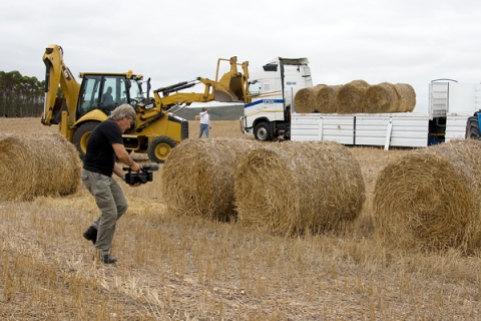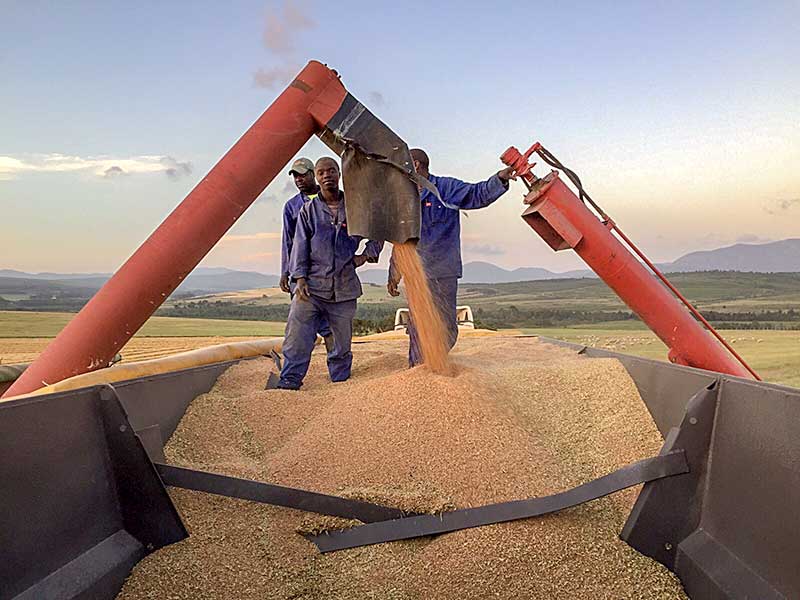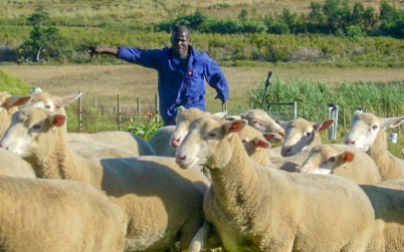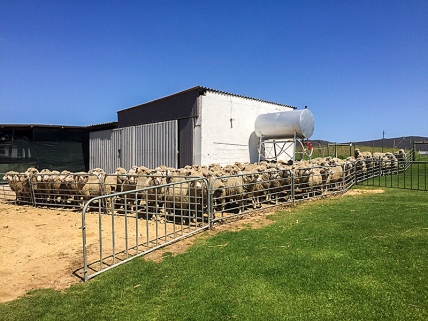Theunis of Landmeterskop one day found what he thought were three orphaned Egyptian goslings in the veld. He brought them home and placed them with our new batch of runner ducklings. Two of them died within a couple of days, and only one survived and thrived, and also soon showed her true colours. She was indeed a Spur-winged Goose, scientifically known as Plectropterus gambensis!
For almost a year she lived with the other geese and ducks, until about ten days ago when she was reported missing… We have looked everywhere but cannot find her. We can only hope that she is well and on a grown-up adventure and that she will eventually return, as this species is partially migratory, making seasonal movements of several hundred kilometres. They normally breed during or near the end of the wet season in solitary pairs.
This brought to mind the story we once read about Peggy, the famous Spur-winged Goose of Somerset West, as told and photographed by the late Nico Myburgh, renowned bird-photographer and at that stage curator of the Helderberg Nature Reserve and published by Village Life Magazine:

Peggy, grand mother goose
This is the true story of a courageous Spur-winged Goose who became a legend in her own time, told by Nico Myburgh, who knew her better than anyone else.
It all started in 1971 when a mixed batch of six week old water birds was donated to the Helderberg Nature Reserve by the water bird hatchery at Jonkershoek on condition that subsequent hatchlings would be allowed to fly free. The batch consisted of two Spur-winged Geese, two African Shellduck, and various other species of ducks. All were pinioned birds.
At the reserve they were fed well on duck pellets and other mixtures and grew fat fast. They had all reached maturity when tragedy struck: the female spur-winged was killed and eaten by a lynx. (Unlike the ducks, the spur-winged wandered around in the fields in the buck camp surrounding the duck pond most of the time, so they were always a bit vulnerable.)
Luckily, about a week later a flock of wild spurwings landed in the buck camp. The male was nearby all the time, so he joined up with them. They wandered around there all day and late afternoon when the flock left, one female stayed behind. She kept her distance at first for a few days, but gradually she came nearer. Then about ten days later, after we had been holding our breath for so long, she came down to the dam with the male and started eating pellets. All was well. A marriage was arranged and soon took place. The female was now quite settled in her new domestic life. The duck pond was now called the Spur-winged Pond.
Then tragedy struck again. The male bird was killed by a lynx. The lynx is about the only predator that can cope with a spurwing, which has a 5 cm spur on the edge of its wings which could keep any other predator away. We were sure we would now lose the female as well.
We didn’t see her for about three to four days, but then she came back. For the next thirty-five days she came down from the mountain to have a good feed, then went back up the mountain. At that time we had no idea what this was all about.
Then one morning at about ten-thirty suddenly all became clear. Down the mountain road she came, with eleven day-old goslings following her. Straight down to the dam she went with her whole new family. They headed straight for the feeding trough, where they were soon eating away merrily. Then onto the dam they went swimming, all twelve of them.
What had been happening was “Mother Goose”, as she became known then, had been going up the mountain to a sheltered valley, about 1,5 km away, where she had made a well-hidden nest. She was laying one egg per day, then coming down every day for eleven days until her clutch was complete. For the next thirty-five days, while she was incubating, she came down once a day just for a meal.
The goslings grew fast because food was available all day long. All eleven grew to full size, then they all went off, going their own ways. Mother Goose stayed on for about a month. It was now April. Then one morning she was gone. We were all very sad, as we thought this would be the end of a wonderful story.
Then in early May, there she was back again on the Spurwing Pond. Just a day or two to feed up well and up the mountain she went, to the same sheltered valley.
The whole story now repeated itself. Ten goslings this time. So it went for four years. The pond had now been fenced to protect the goslings from mongoose, etc., so every time she came down we had to lend a hand and lift the babies over the wire fence. This was a dangerous operation, because of the spurs on her wings. She was once the cause of my assistant, who was helping to catch the babies, ending up in hospital with a wound in his behind that required nine stitches!
After four years tragedy struck again. The fourth brood was about four weeks old when Mother Goose caught her leg in the fence and it was broken so badly that it had to be amputated. The local newspaper reporter then christened her Peggy, for peg-leg.
This remarkable bird brought down seven more broods of goslings safely to the pond, hopping on one leg with a little support from the fifteen centimetre stump. She successfully reared eighty-seven goslings in her lifetime of fifteen years.
In her honour the first line of Christmas lights in the main road of Somerset West depicts Peggy with nine goslings. And a Peggy weathervane over the entrance gate at the Helderberg Nature Reserve will serve as a reminder of this special mother goose for many years to come. What a bird!


Original article posted in Village Life No 14





































































































